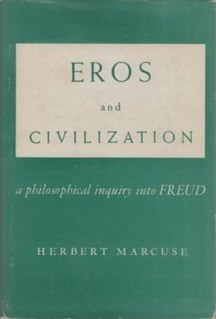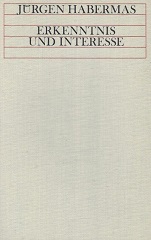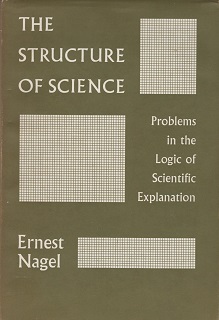
Baruch (de) Spinoza was a Dutch philosopher of Portuguese Sephardi origin. One of the early thinkers of the Enlightenment and modern biblical criticism, including modern conceptions of the self and the universe, he came to be considered one of the great rationalists of 17th-century philosophy. Inspired by the groundbreaking ideas of René Descartes, Spinoza became a leading philosophical figure of the Dutch Golden Age. Spinoza's given name, which means "Blessed", varies among different languages. In Hebrew, it is written ברוך שפינוזה. In the Netherlands he used the Portuguese name Bento. In his Latin and Dutch works, he used Latin: Benedictus de Spinoza.

Gilles Deleuze was a French philosopher who, from the early 1950s until his death in 1995, wrote on philosophy, literature, film, and fine art. His most popular works were the two volumes of Capitalism and Schizophrenia: Anti-Oedipus (1972) and A Thousand Plateaus (1980), both co-written with psychoanalyst Félix Guattari. His metaphysical treatise Difference and Repetition (1968) is considered by many scholars to be his magnum opus. An important part of Deleuze's oeuvre is devoted to the reading of other philosophers: the Stoics, Leibniz, Hume, Kant, Nietzsche, and Bergson, with particular influence derived from Spinoza. A. W. Moore, citing Bernard Williams's criteria for a great thinker, ranks Deleuze among the "greatest philosophers". Although he once characterized himself as a "pure metaphysician", his work has influenced a variety of disciplines across the humanities, including philosophy, art, and literary theory, as well as movements such as post-structuralism and postmodernism.
Pantheism is the belief that reality is identical with divinity, or that all-things compose an all-encompassing, immanent god. Pantheist belief does not recognize a distinct personal god, anthropomorphic or otherwise, but instead characterizes a broad range of doctrines differing in forms of relationships between reality and divinity. Pantheistic concepts date back thousands of years, and pantheistic elements have been identified in various religious traditions. The term pantheism was coined by mathematician Joseph Raphson in 1697 and has since been used to describe the beliefs of a variety of people and organizations.
In philosophy, rationalism is the epistemological view that "regards reason as the chief source and test of knowledge" or "any view appealing to reason as a source of knowledge or justification". More formally, rationalism is defined as a methodology or a theory "in which the criterion of the truth is not sensory but intellectual and deductive".
Naturalistic pantheism, also known as scientific pantheism, is not a formal form of pantheism. It has been used in various ways such as to relate God or divinity with concrete things, determinism, or the substance of the Universe. God, from these perspectives, is seen as the aggregate of all unified natural phenomena. The phrase has often been associated with the philosophy of Baruch Spinoza, although academics differ on how it is used.
Sir Stuart Newton Hampshire was an English philosopher, literary critic and university administrator. He was one of the antirationalist Oxford thinkers who gave a new direction to moral and political thought in the post-World War II era.
Acosmism, in contrast to pantheism, denies the reality of the universe, seeing it as ultimately illusory, and only the infinite unmanifest Absolute as real. Conceptual versions of Acosmism are found in eastern and western philosophies.

Spinozism is the monist philosophical system of Baruch Spinoza that defines "God" as a singular self-subsistent Substance, with both matter and thought being attributes of such.

Life Against Death: The Psychoanalytical Meaning of History is a book by the American classicist Norman O. Brown, in which the author offers a radical analysis and critique of the work of Sigmund Freud, tries to provide a theoretical rationale for a nonrepressive civilization, explores parallels between psychoanalysis and Martin Luther's theology, and draws on revolutionary themes in western religious thought, especially the body mysticism of Jakob Böhme and William Blake. It was the result of an interest in psychoanalysis that began when the philosopher Herbert Marcuse suggested to Brown that he should read Freud.

Ethics, Demonstrated in Geometrical Order, usually known as the Ethics, is a philosophical treatise written in Latin by Benedictus de Spinoza. It was written between 1661 and 1675 and was first published posthumously in 1677.

Eros and Civilization: A Philosophical Inquiry into Freud is a book by the German philosopher and social critic Herbert Marcuse, in which the author proposes a non-repressive society, attempts a synthesis of the theories of Karl Marx and Sigmund Freud, and explores the potential of collective memory to be a source of disobedience and revolt and point the way to an alternative future. Its title alludes to Freud's Civilization and Its Discontents (1930). The 1966 edition has an added "political preface".
In early philosophies of psychology and metaphysics, conatus is an innate inclination of a thing to continue to exist and enhance itself. This "thing" may be mind, matter, or a combination of both. Over the millennia, many different definitions and treatments have been formulated, including seventeenth-century philosophers René Descartes, Baruch Spinoza, Gottfried Leibniz, and Thomas Hobbes who had made significant contributions. The conatus may refer to the instinctive "will to live" of living organisms or to various metaphysical theories of motion and inertia. Often the concept is associated with God's will in a pantheist view of Nature. The concept may be broken up into separate definitions for the mind and body and split when discussing centrifugal force and inertia.

Spinoza: Practical Philosophy is a book by the philosopher Gilles Deleuze, in which the author examines Baruch Spinoza's philosophy, discussing Ethics (1677) and other works such as the Tractatus Theologico-Politicus (1670), providing a lengthy chapter defining Spinoza's main concepts in dictionary form. Deleuze relates Spinoza's ethical philosophy to the writings of Friedrich Nietzsche and Willem van Blijenbergh, a grain broker who corresponded with Spinoza in the first half of 1665 and questioned the ethics of his concept of evil. The work has received praise from commentators.

Baruch Spinoza's philosophy encompasses nearly every area of philosophical discourse, including metaphysics, epistemology, political philosophy, ethics, philosophy of mind, and philosophy of science. It earned Spinoza an enduring reputation as one of the most important and original thinkers of the seventeenth century.

Knowledge and Human Interests is a 1968 book by the German philosopher Jürgen Habermas, in which the author discusses the development of the modern natural and human sciences. He criticizes Sigmund Freud, arguing that psychoanalysis is a branch of the humanities rather than a science, and provides a critique of the philosopher Friedrich Nietzsche.

What is Philosophy? is a 1991 book by the philosopher Gilles Deleuze and the psychoanalyst Félix Guattari. The two had met shortly after May 1968 when they were in their forties and collaborated most notably on Capitalism & Schizophrenia and Kafka: Towards a Minority Literature (1975). In this, the last book they co-signed, philosophy, science, and art are treated as three modes of thought.

The Structure of Science: Problems in the Logic of Scientific Explanation is a 1961 book about the philosophy of science by the philosopher Ernest Nagel, in which the author discusses the nature of scientific inquiry with reference to both natural science and social science. Nagel explores the role of reduction in scientific theories and the relationship of wholes to their parts, and also evaluates the views of philosophers such as Isaiah Berlin.

The Theory of Good and Evil is a 1907 book about ethics by the English philosopher Hastings Rashdall. The book, which has been compared to the philosopher G. E. Moore's Principia Ethica (1903), is Rashdall's best known work, and is considered his most important philosophical work. Some commentators have suggested that, compared to Principia Ethica, it has been unfairly neglected.
Beth Lord is a Canadian philosopher specialising in the history of philosophy, especially the work and influence of Immanuel Kant and Baruch Spinoza, and contemporary Continental philosophy. She is currently a Professor in the School of Divinity, History and Philosophy at the University of Aberdeen, where she has worked since 2013.

 wikimedia.org or a postal letter to the Wikimedia Foundation. These messages must explicitly permit use under CC BY-SA and the GFDL. See Wikipedia:Donating copyrighted materials.
wikimedia.org or a postal letter to the Wikimedia Foundation. These messages must explicitly permit use under CC BY-SA and the GFDL. See Wikipedia:Donating copyrighted materials.









